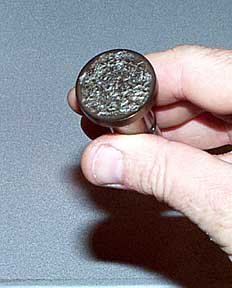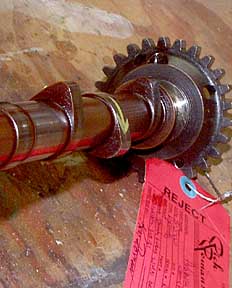AlexPeterson
Well Known Member
I was just thinking about the good luck I've had with my engine for almost 10 years, with no problems whatsoever save for a fuel pump needing replacement.
Well, I was finishing an oil change (1270 hours), and dutifully cut open the oil filter. It is quite startling to see little shiny flecks in there! I brought the fan-fold filter home for further analysis. I have a nice stereo microscope at home, which came in handy. What I found were little flakes, mostly iron, around .005" to .008" in size. I saw around 6 to 12 pieces per pleat. Their thickness is extremely thin, probably 50 - 250 millionths of an inch if I had to guess. There were a few I found that were in the .020" to .030" size range, and a few of the smaller ones were non-ferrous.
With only reading glasses in sunlight, I probably would have counted about 30 to 50 pieces. Microscopes must be used with caution...
I've spoken with one mechanic (before I knew if the pieces were magnetic, size, shape, etc.) who suggested cam if they were little thin pieces and ferrous.
The Lycoming Flyer Maintenance guide suggests some steps as well, such as running for a half hour and checking the filter again, followed by 2 hours' flight time, and again looking. However, I'm not too interested in flying it...
Next steps:
1. Pull screen to look for anything that might be larger than the holes in it.
2. Boroscope everywhere possible
3. Get some money
4. I regularly do oil analyses, and it will be interesting to see the results of this one.
All seasoned and reasoned suggestions welcomed! I'll keep progress posted.
Well, I was finishing an oil change (1270 hours), and dutifully cut open the oil filter. It is quite startling to see little shiny flecks in there! I brought the fan-fold filter home for further analysis. I have a nice stereo microscope at home, which came in handy. What I found were little flakes, mostly iron, around .005" to .008" in size. I saw around 6 to 12 pieces per pleat. Their thickness is extremely thin, probably 50 - 250 millionths of an inch if I had to guess. There were a few I found that were in the .020" to .030" size range, and a few of the smaller ones were non-ferrous.
With only reading glasses in sunlight, I probably would have counted about 30 to 50 pieces. Microscopes must be used with caution...
I've spoken with one mechanic (before I knew if the pieces were magnetic, size, shape, etc.) who suggested cam if they were little thin pieces and ferrous.
The Lycoming Flyer Maintenance guide suggests some steps as well, such as running for a half hour and checking the filter again, followed by 2 hours' flight time, and again looking. However, I'm not too interested in flying it...
Next steps:
1. Pull screen to look for anything that might be larger than the holes in it.
2. Boroscope everywhere possible
3. Get some money
4. I regularly do oil analyses, and it will be interesting to see the results of this one.
All seasoned and reasoned suggestions welcomed! I'll keep progress posted.











